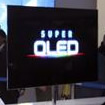
Despite their advantages over LED/LCD TVs, OLED TVs are expected to comprise less than 1% of flat panel TV sales through at least 2013, reaching 9% of units by 2017.
In contrast, LED/LCD TVs, which often offer thinner form factors and less power consumption over traditional (CCFL) LCD TVs, are expected to grow from 35% of the market in 2011 to 75% in 2017, according to ABI Research Consumer Electronics Research Service. 2012 OLED TVs from Samsung and LG are expected to cost well over $5,000 (closer to $10,000) at sizes less than 60" - Sony and Panasonic are partnering to release larger screen OLED TVs in 2013. At these prices consumers are challenged with selecting picture quality and form factor over size - consider that an equivalent sized LED TV costs thousands less and at these prices you are close to Sharp's new 90" LED TV (Sharp's 80" LED TV can be had for prices closer to $4,000).
"Primary research conducted in the US continues to suggest most consumers place price and screen size above all other factors," says ABI Research practice director Sam Rosen. "While display technology is cited as very important as well, the prices OLED TVs are expected to command, at least through 2013, will make it a difficult sell for most consumers."
2012's crop of OLED TVs are not the first as Sony introduced much smaller screens in the past, but price and screen size again conspired to make the market for OLED TVs rather limited. Scale will eventually bring prices down, but with LED TVs supporting form factors approaching the svelteness of OLED TVs many consumers may still opt for the less expensive alternative, limiting the rate at which scale is reached.
ABI Research senior analyst Michael Inouye added, "Picture quality is also highlighted as a key benefit for OLED screens, but consumer behavior suggests this might not engender as much perceived value as some might presuppose. Higher contrast ratios and more vibrant colors while nice, will continue to lose out to screen size and price for those consumers who embrace and fully enjoy streaming video, think Blu-ray picture is good, but still enjoy DVD. In the end OLED TVs, at least in the beginning, will likely be more of a statement of status or strong appreciation of form factor than video quality."